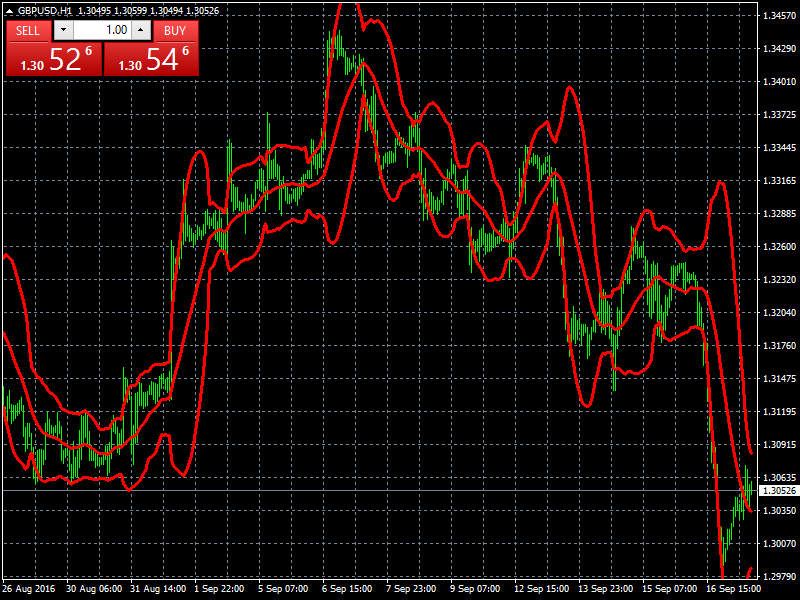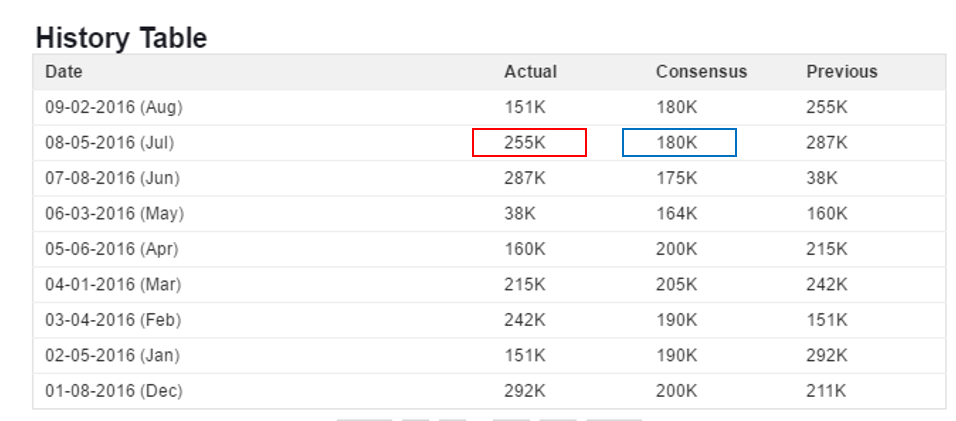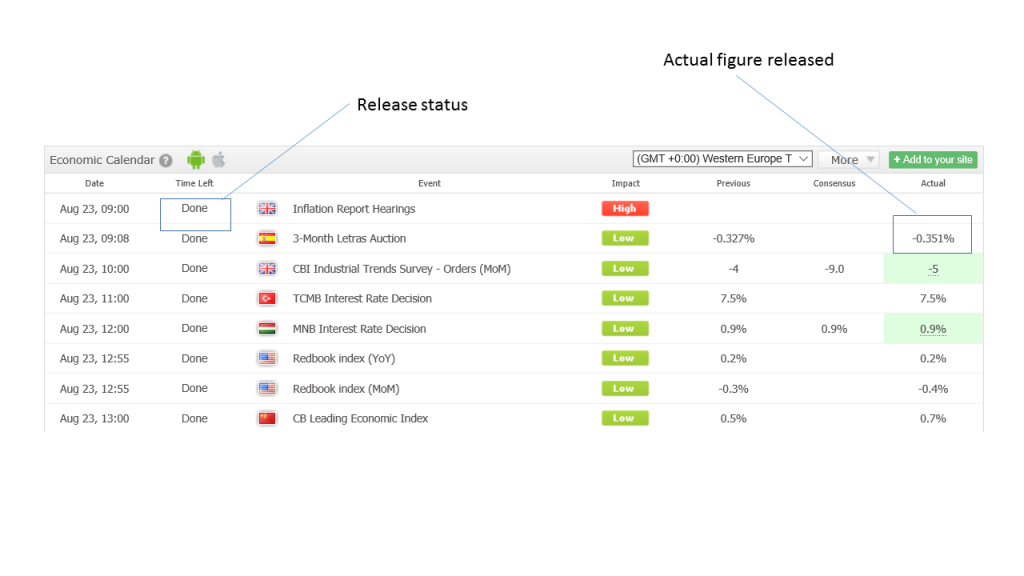16.02.2017
Forex Signals You Can Use Today

Perhaps more than any other market Forex trading lends itself to the use of Technical and Quantitative Analysis and as result of that to the use of Forex Signals to drive trading decisions. In our article on Currency Charts we discuss some of the basic concepts around Technical Analysis, some popular studies and indicators and the sort of signals that are of interest to traders.
With dozens of Forex pairs and crosses, alongside our Precious Metals and Equity Index contracts, available for clients to trade via Blackwell Global There is plenty to keep investors and traders occupied. In truth given the fast moving nature of the modern markets it would be virtually impossible for a single trader to follow all of these instruments simultaneously. That’s why savvy traders will often look for and use Forex Signals to alert them to interesting developments and price action.
Forex Signals you can try today
One useful tool that you can quickly use to bring Forex signals to your attention is the Alert Manager in the Blackwell Trader MT4 platform . You can find this feature in the terminal toolbar that can be found at the bottom of the platform window. To access click on “View” in the toolbar at the top of the platform and select “Terminal then simply click on the alert tab in the terminal toolbar, then right click in the window which opens and select create from the menu. You can now start to set your own price or time based alerts using the menu items in the alert editor.
More sophisticated signals
Many Forex Signals will be more sophisticated than simple time and price alerts, though these still have their place in a trader’s toolbox. These more sophisticated Forex Signals may be based around news events and data releases or Technical Analysis. For example the appearance of recognised chart patterns and studies, or the behaviour of indicators applied to price charts. One example of a chart study that traders use to generate Forex Signals are Bollinger Bands. Developed in 1980s by John Bollinger, the bands plot a range that represents a set standard deviation above and below a moving average of the price of the underlying instrument in the chart. The bands form a channel around the price action and are used to measure current price performance, relative to historical price action. Signals are generated when the current price touches or breaks through either the upper or lower bands. Though the nature of the indicator means that these breakouts are rarer events than those occasions when the price merely touches the bands.
The chart below shows the hourly price of GBP USD (British Pounds vs US Dollars) with Bollinger Bands plotted in red. The middle red line represents the moving average around which the Bollinger Bands are calculated.
In the bottom left of the chart we can see that during the period 26th to the 30th of August the price of GBP USD touched the lower band on numerous occasions,from where it rallied and subsequently intersected with the upper band,before retreating once more. The intersections between the price and the Bollinger bands could have been used as Forex Signals on both the buy and the sell side. Buy signals on touches of the lower band and sell signals when the price touched the upper band and retreated.
If we look at the price action in early September (more towards the middle of the chart) we can see that the price of Cable (GBP USD) rallied strongly and on two occasions broke above the upper Bollinger band, then extended higher before correcting. In this instance the breach of the upper band could have been used to generate a Forex Signal indicating a potential buying opportunity. Whilst moves back below the upper band could have been considered a sell signal.
Blackwell Trader MT4 supports the use of EAs or Expert Advisors which are programs that can be purchased and downloaded for use on Metatrader many of these programs offer Forex Signal generation.
Forex Signals from Fundamental data
Fundamental data can also be used to generate Forex Signals. Macroeconomic releases are one of the principal drivers of the financial markets and in particular the Forex and Bond markets. There is a regular calendar of events and news releases. Traders watch the most important of these very closely. In particular they look for deviations (be they positive or negative) from the markets expectations.
An unexpected jump in US unemployment data will likely have a direct effect on the value of the US dollar for example. We can look at just such a deviation in the shape of the July 2016 Nonfarm Payrolls report (a measure of how many new jobs the US economy has created in the prior month) which came in around 40 percent higher than the markets forecast.
The table below (source FXstreet) shows the recent history of this US data with the actual figure for July 2016s release highlighted in red and the market or consensus forecast for the same highlighted in blue. The sharp deviation between these two values creates a potential Forex Signal.
Though actioning Forex Signals derived from this data requires some further thought as traders need to consider exactly what the ramifications of such a beat are. For example the July jobs data was potentially positive for the US Dollar and negative for equity indices, as it could be seen to have strengthened the case for a further US interest rate rise by the Federal Reserve in 2016. Higher interest rates are generally positive for a the underlying currency (in this case the Dollar) but potentially negative for stocks as US companies have enjoyed and got used to a decade of low borrowing costs.
Using a calendar to track data and generate Forex Signals
Blackwell Global provides its customers with access to a dedicated calendar to track macroeconomic data releases and other key events. Users can filter the calendar by the expected impact or importance of the event and by individual currencies such that if you are interested in items that are likely to have a medium to high market impact which are related to the Japanese Yen you can filter the calendar accordingly. The calendar shows users the value of the previous data release and where available a consensus forecast for the forthcoming release. As well as the actual data from the release when it happens (see the image below). Allowing users to track economic data and generate Forex Signals from deviations from consensus or unexpected outcomes.
In conclusion then Forex Signals can come from a wide variety of sources they can be generated through observation, through the use of charts and indicators or from fundamental data. Forex Signals can be automated through the use of alert manager or by deploying specialist add ins (EAs). Note though that EAs can act against a client’s interests (i.e.lose money) and that their signals will often require confirmation. Forex Signals highlight potential trading opportunities but can often require further confirmation or judgement from the end user.
One of the best ways for traders to discover which Forex Signals work best for their approach to trading is to open a demo account and download our MT4 trading platform on which you can trade in a realistic simulation of the live market, without risking any real cash.This is the perfect environment to test which are the right Forex Signals for you.
Once you have identified them why not apply to open a live trading account at Blackwell Global and trades those Forex signals in the real market.
Back to Previous Page >>



